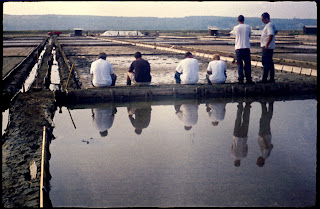Have you ever planned a trip and, as all of us, who think
about ourselves as a photographers, take with you a photographic camera of some
sort? Of course you did. But on what kind of trip or voyage did you go. A
family trip, business one, tourist voyage... Did you take with you almost most
of your gear you own (camera, backup, several lenses, tripod, flashes, etc.)
and then didn’t used more than one camera with one lens? Have you been ever
found in a situation, when in company you were always last of the group and always
waited, because the ordinary tourist view and snapshot didn’t meet your
photographic standards?
If your answers are mostly yes on to those questions you
probably have badly planned your trips. The kind of trip that includes all sceneries
in one afternoon, it is not a photographic trip at all! The time is essential for
the photographic trips. This means only one or maximum two different sceneries
of a day. Preferably you visit first scenery in the early morning when the sun
rises and other in the late evening when the sun sets. And around the noon is
the siesta time for photographers. We all know why. Do we?
But when we go to a non photographic trip (and we all do
them) as a responsible photographer we must properly equip. At all we all want
some images from our voyages, no matter if it is business or whatever trip it
is. At least I when I go to a trip that is not strictly photographic I try to
equip properly, this means light. Only one camera and one lens, a rangefinder instead
of a SLR, a smaller lighter, non intrusive option. But then once a year you
must go on the photographic trip and take with you all gear you might need or
think that you do. But this means that this trip is all dedicated to taking
photographs, slow without distraction. This means no time limits, places to be
seen in limited time, no people that are nervously waiting for you, no family
who aspect your presence in the real world.
Last time I was asking about what photographic camera should
I take with me on mountain hike. I knew that it must be light, because it would
be just high pace mountain hike, not a slow (with a lot of time for taking
photo) one. I finally decide to take with me Altissa Altix-n camera. Nice
little “guess the distance” all manual rangefinder from former Eastern Germany.
Maybe it would be better an SLR with wide angle prime, but it was very foggy
and moist, and don’t know how would electronics in SLR I own would works in
those conditions. So I’m pleased with my choice but I didn’t really have time or
strength to really photographically enjoy this trip. But I was there, on the top, that is
all it counts, at least for me.
Matjaž












